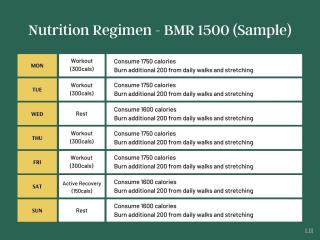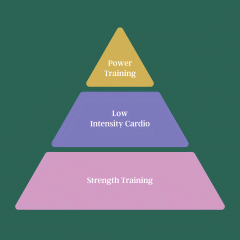Are you consciously designing your life? Do you really understand what that means and how to do it?
This matters because, in a time when online marketers are pitching their services or products, promising that they’ll give you the time and financial freedom you need to create your “life by design,” it is important for you to have an understanding of what designing your life actually looks like, and how to do it effectively.
The problem is that, while it sounds great in theory, most people don’t understand what it means to create a life by design, and they do not have the first clue where to start to make that happen.
For that reason, I’m going to share with you 5 steps for designing your life in a way that is both sustainable and wise.
Step 1: Get Clear on What You Want
At the core of designing your life is the question of what you actually want and what will help you to wake up excited to live every day. In order to achieve this, you have to get clear on exactly what you want.
It seems like common sense, right? Well, common sense isn’t always common practice.
We live in a society where people are overwhelmed with the inputs, thoughts, beliefs, and opinions of others. Not to mention, the environments we are routinely in impact our values, beliefs, and desires on a deep level.
Because of that, it becomes very easy to lose touch with who we are and what we want in life among all the noise.
That’s why seeking clarity is so important.
Clarity is foundational to designing the life you desire to live because without it, the desires and expectations that everyone else has for your life will take over.
In order to design your life, you have to break free from the stories of your past that have told you who you are and what you should want. The only effective way to do that is by seeking clarity.
I always advise my clients to first get crystal clear on who they are and/or who they’d like to be. Then, out of that truth, determine what it is that you desire most in your life.
Step 2: Create a Plan
Once you’ve gotten clarity on exactly what you want in your life, the real “design” work comes when you create a plan to achieve those desires.
If you’re not sure how what a good plan may include, this article is a good place to start.
Think about your life like a beautiful work of architecture.
A bunch of builders didn’t just walk out there one day and start throwing things together in hopes that something nice would turn out.
No, they did the tedious work of mapping out every single detail of that structure, and they did it long before they ever even broke ground on building it.
Your life is much like that. One of the biggest reasons people never get to live the lives they desire is because they are unwilling to do the necessary work of creating a plan to get there.
Nothing great in life is accomplished without a rock solid plan.
Yes, hard work, perseverance, and belief are all essential parts of you effectively creating and living the life you desire, but all of those are for naught if there isn’t a plan in place for designing your life.
Be like the architect and take the time to create the plan before you start, metaphorically, breaking ground, swinging hammers, and constructing anything of significance in your life.
Otherwise, you may find that the structure you’ve built isn’t the one you had hoped for.
Step 3: Be Flexible and Open-minded
When it comes to designing your life, you must have a plan — we have already established that.
However, even though there is a plan in place, those who live the most fulfilled and joyful lives are those who are flexible and open-minded to change and new opportunities.
One of the downsides to planning is that, because you invest so much time, energy, and effort into creating it, you can get rigid about following it to a T.
The problem is that life is always evolving and changing, and it is that fluid nature of life that brings uncertainty and adventure into the picture.
Therefore, the plans you make today may no longer be relevant tomorrow.
You may have plans of going back to school to further your education, but an opportunity to step into entrepreneurship may come available.
Accomplishing some big goal may be in your plans, but a bigger goal may present itself, or the original goal may no longer be of interest to you.
In both of those scenarios, being dogmatic about carrying out the original plan may be a detriment to future opportunities.
The main point in all of this is that when it comes to designing your life, you absolutely want to have a plan in place, but you must also keep an open heart and open mind.
That is where the adventure in life lies.
Step 4: Say “No” More Often
If you take away nothing else from this article, this may be the one piece of wisdom you want to hold on to.
We live in a society where “busy” is celebrated. The problem is, when busy becomes your default way of living, the things you care most about have a way of getting buried under other stuff.
That’s why the subtle art of learning to say no more often is necessary if you want to start designing your life.
One truth about life is that we only get so much of it. Another truth is, we don’t know how much we get. And one last truth is that you can’t do two things at once — at least not effectively.
If you add all of those together, that means with the unknown, limited time you have, you’re either designing your life, or you are falling victim to what Brendon Burchard calls “other people’s agendas.”
We live in a culture where “no” has a negative connotation. Because of that, most people grow up lacking the ability to effectively take a stand for their time and confidently say no to something.
Whether it’s due to a fear of upsetting someone or letting someone down, or the dreaded fear of missing out (FOMO), people just aren’t great at saying no.
However, if you truly want to design your life as you desire for it to be, it’s imperative that you take back control of your time and agenda.
The best way to do that is to develop the skill of saying no more often.
Step 5: Understand That Failure Is Part of the Process
There it is, the dreaded “F” word — failure.
Most people live in fear of failure, and that fear stifles their ability to go after the true goals, dreams, and aspirations. However, if you want to be able to design your life, you must not only accept that failure is going to be part of the process, but you must also learn to embrace it.
I’ll tell you why: it is through the failures in life that we often learn our greatest lessons and are able to achieve more growth.
You see, most people don’t take time to reflect upon their wins to figure out what went well that allowed them to win. And they definitely don’t take time to evaluate what they can do better the next time.
However, when people fail, they tend to be a bit more reflective, especially regarding why they failed in the first place.
If you can learn to dig into your failures a bit more and see them as learning opportunities, you will set yourself up for long-term success.
One of the biggest problems with failure is that people see it as a stop sign. They think that is the end of the road. Failure doesn’t have to be that way though.
If you want to start designing your life, start thinking of failure as a yield — a place where you pause, evaluate the situation, and proceed when you’re ready.
When you can learn to view failure in this way, you start to understand the benefits of it, and once you can understand its benefits, you’ll not only stop fearing failure, but you’ll start embracing it.
Conclusion
Living a life by design is absolutely possible. However, you have to remember that it is a conscious process.
Just like with architecture, great works don’t happen by accident. It’s through conscious, intentional action that someone is able to design and live the life they desire.
By engaging with the 5 steps outlined here, you’ll be effective and actually enjoy the process of designing your life.
Featured photo credit: Marcos Paulo Prado via unsplash.com





























































